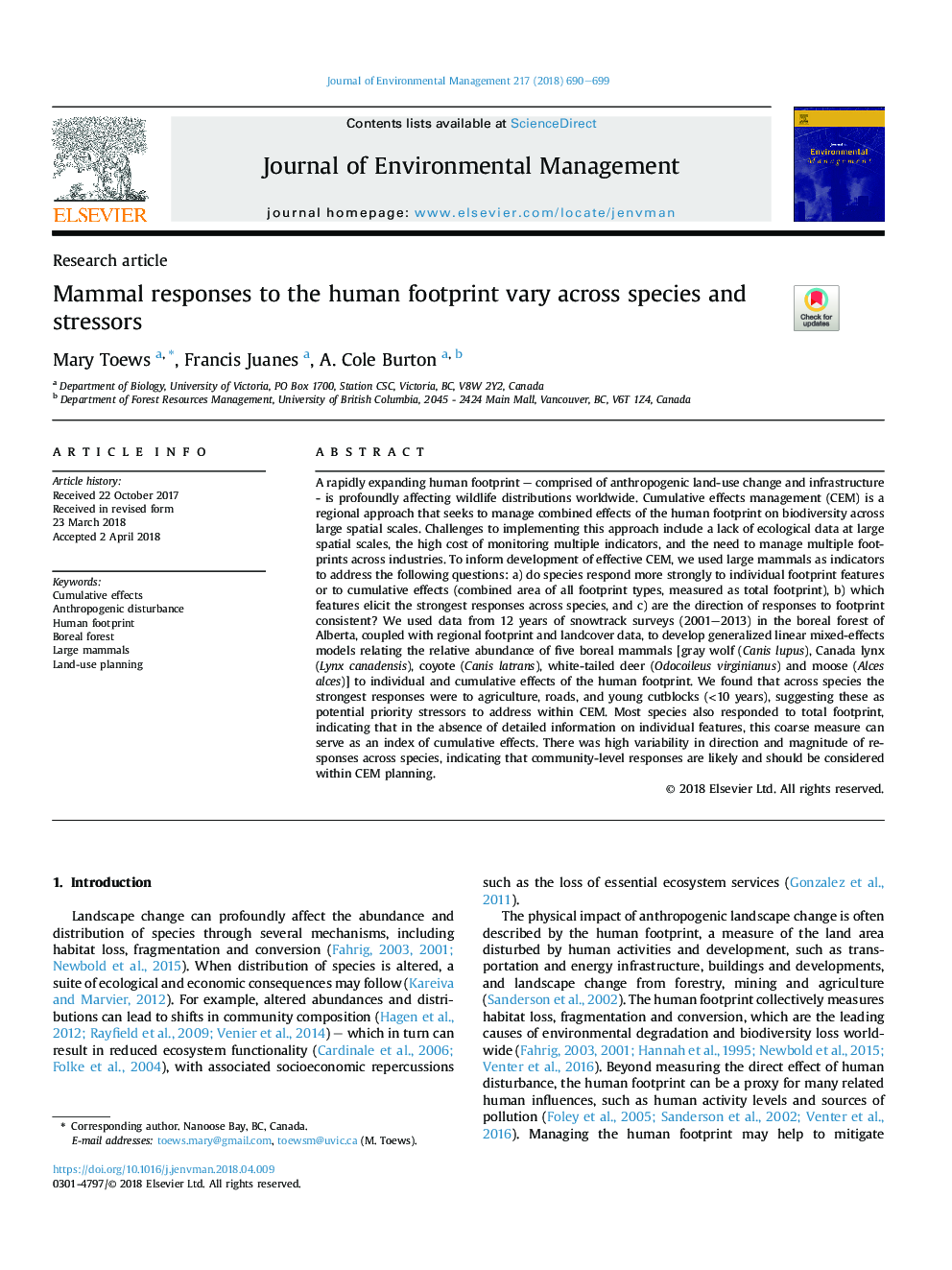| کد مقاله | کد نشریه | سال انتشار | مقاله انگلیسی | نسخه تمام متن |
|---|---|---|---|---|
| 7477708 | 1485201 | 2018 | 10 صفحه PDF | دانلود رایگان |
عنوان انگلیسی مقاله ISI
Mammal responses to the human footprint vary across species and stressors
ترجمه فارسی عنوان
پاسخ های پستان به پدیده های انسان در بین گونه ها و عوامل استرسزا متفاوت است
دانلود مقاله + سفارش ترجمه
دانلود مقاله ISI انگلیسی
رایگان برای ایرانیان
کلمات کلیدی
اثرات تجمعی، اختلال انسانی، رد پای انسان، جنگل نابالغ، پستانداران بزرگ، برنامه ریزی استفاده از زمین،
موضوعات مرتبط
مهندسی و علوم پایه
مهندسی انرژی
انرژی های تجدید پذیر، توسعه پایدار و محیط زیست
چکیده انگلیسی
A rapidly expanding human footprint - comprised of anthropogenic land-use change and infrastructure - is profoundly affecting wildlife distributions worldwide. Cumulative effects management (CEM) is a regional approach that seeks to manage combined effects of the human footprint on biodiversity across large spatial scales. Challenges to implementing this approach include a lack of ecological data at large spatial scales, the high cost of monitoring multiple indicators, and the need to manage multiple footprints across industries. To inform development of effective CEM, we used large mammals as indicators to address the following questions: a) do species respond more strongly to individual footprint features or to cumulative effects (combined area of all footprint types, measured as total footprint), b) which features elicit the strongest responses across species, and c) are the direction of responses to footprint consistent? We used data from 12 years of snowtrack surveys (2001-2013) in the boreal forest of Alberta, coupled with regional footprint and landcover data, to develop generalized linear mixed-effects models relating the relative abundance of five boreal mammals [gray wolf (Canis lupus), Canada lynx (Lynx canadensis), coyote (Canis latrans), white-tailed deer (Odocoileus virginianus) and moose (Alces alces)] to individual and cumulative effects of the human footprint. We found that across species the strongest responses were to agriculture, roads, and young cutblocks (<10 years), suggesting these as potential priority stressors to address within CEM. Most species also responded to total footprint, indicating that in the absence of detailed information on individual features, this coarse measure can serve as an index of cumulative effects. There was high variability in direction and magnitude of responses across species, indicating that community-level responses are likely and should be considered within CEM planning.
ناشر
Database: Elsevier - ScienceDirect (ساینس دایرکت)
Journal: Journal of Environmental Management - Volume 217, 1 July 2018, Pages 690-699
Journal: Journal of Environmental Management - Volume 217, 1 July 2018, Pages 690-699
نویسندگان
Mary Toews, Francis Juanes, A. Cole Burton,
